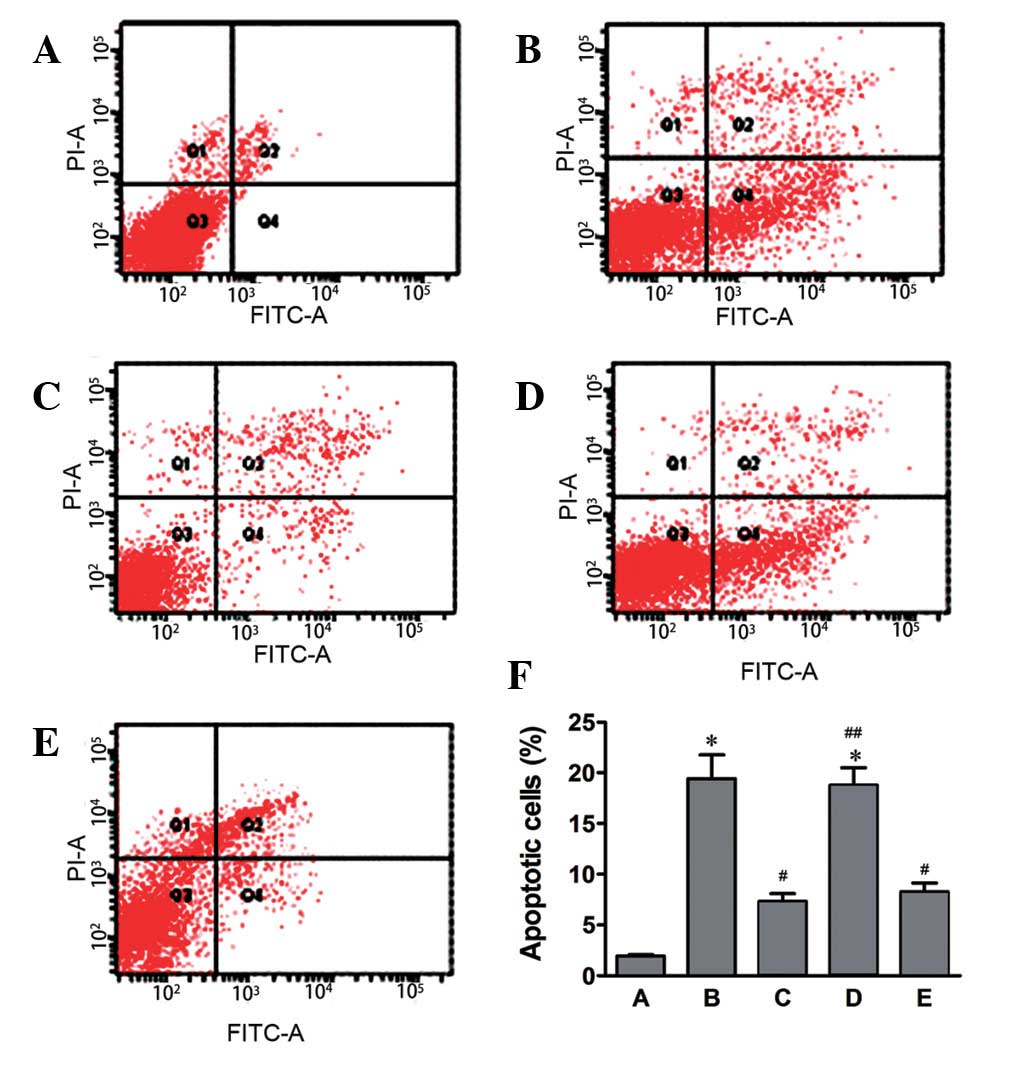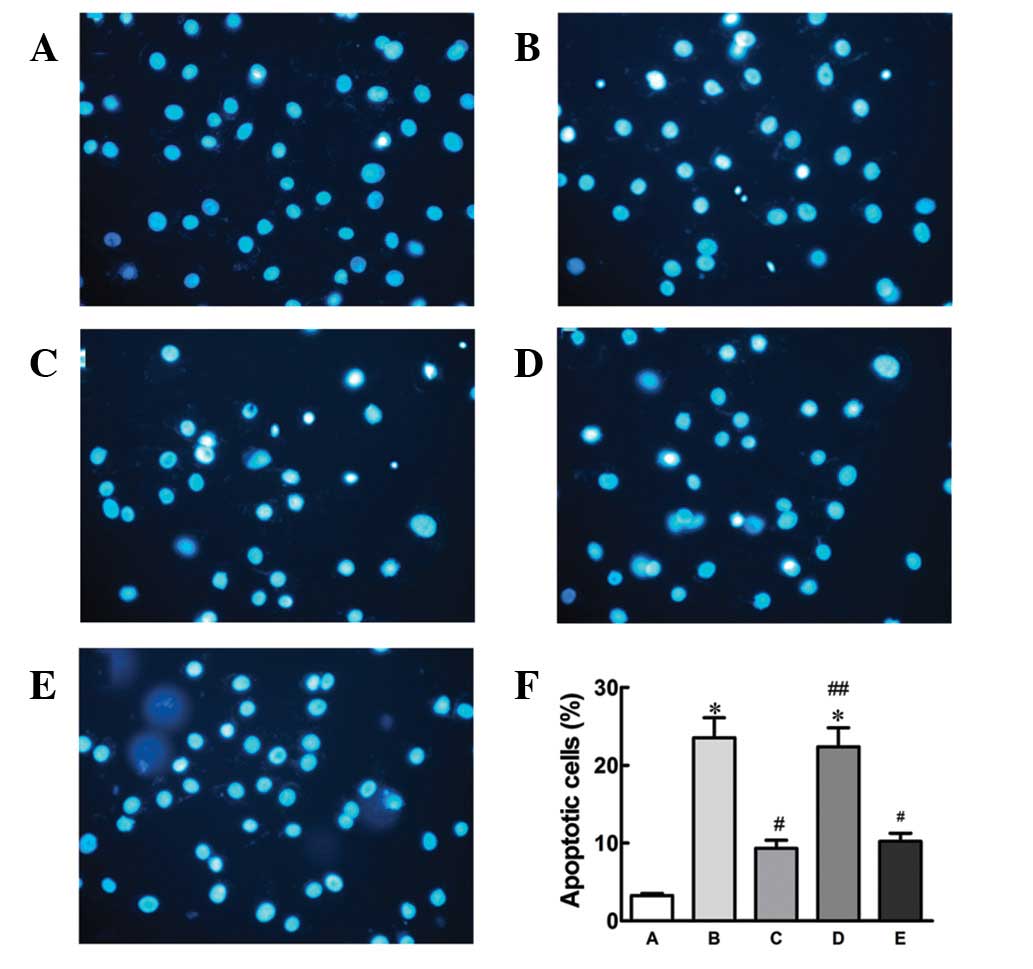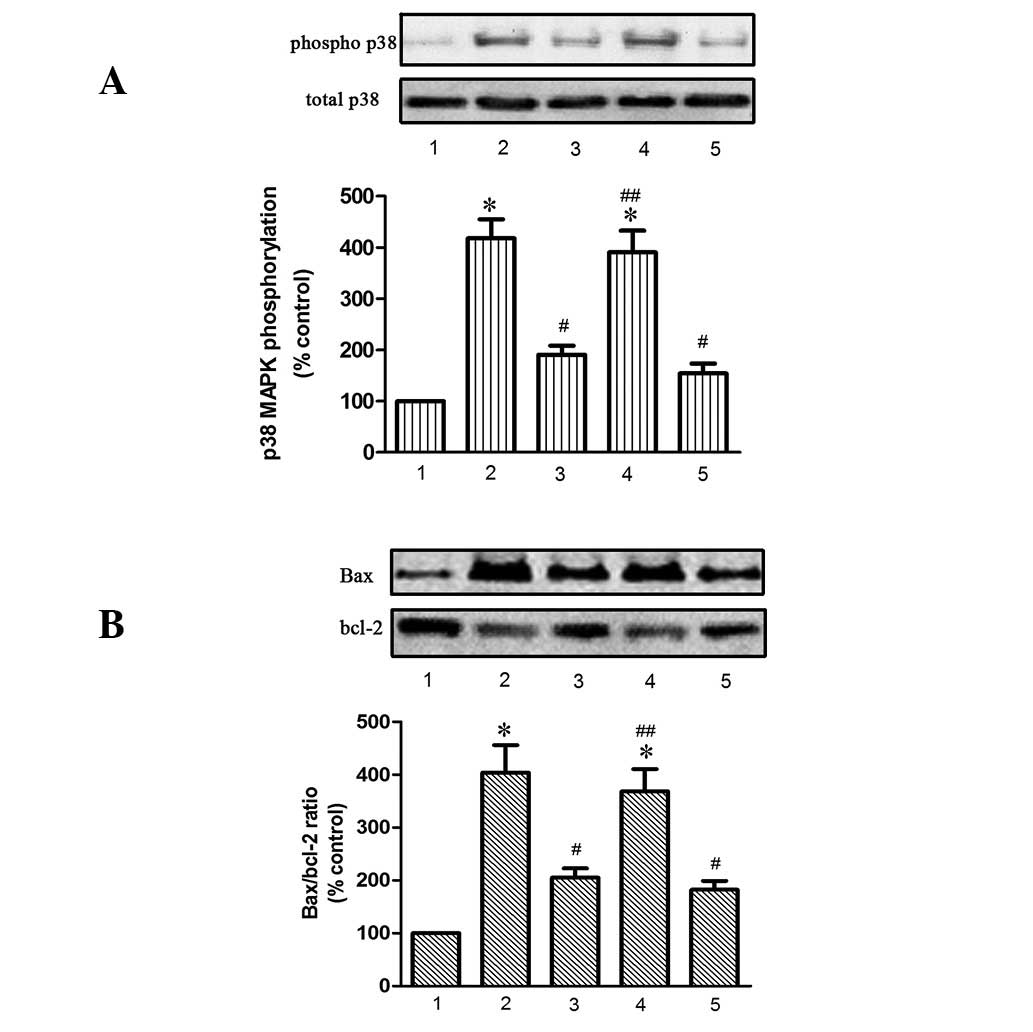|
1
|
Jurasz P, Courtman D, Babaie S and Stewart
DJ: Role of apoptosis in pulmonary hypertension: from experimental
models to clinical trials. Pharmacol Ther. 126:1–8. 2010.
View Article : Google Scholar : PubMed/NCBI
|
|
2
|
Linke A, Recchia F, Zhang X and Hintze TH:
Acute and chronic endothelial dysfunction: implications for the
development of heart failure. Heart Fail Rev. 8:87–97. 2003.
View Article : Google Scholar : PubMed/NCBI
|
|
3
|
Kawashima S and Yokoyama M: Dysfunction of
endothelial nitric oxide synthase and atherosclerosis. Arterioscler
Thromb Vasc Biol. 24:998–1005. 2004. View Article : Google Scholar : PubMed/NCBI
|
|
4
|
Triggle CR, Hollenberg M, Anderson TJ, et
al: The endothelium in health and disease - a target for
therapeutic intervention. J Smooth Muscle Res. 39:249–267. 2003.
View Article : Google Scholar : PubMed/NCBI
|
|
5
|
Steudel W, Scherrer-Crosbie M, Bloch KD,
et al: Sustained pulmonary hypertension and right ventricular
hypertrophy after chronic hypoxia in mice with congenital
deficiency of nitric oxide synthase 3. J Clin Invest.
101:2468–2477. 1998. View
Article : Google Scholar
|
|
6
|
Cuadrado A and Nebreda AR: Mechanisms and
functions of p38 MAPK signalling. Biochem J. 429:403–417. 2010.
View Article : Google Scholar : PubMed/NCBI
|
|
7
|
Weerackody RP, Welsh DJ, Wadsworth RM and
Peacock AJ: Inhibition of p38 MAPK reverses hypoxia-induced
pulmonary artery endothelial dysfunction. Am J Physiol Heart Circ
Physiol. 296:H1312–H1320. 2009. View Article : Google Scholar : PubMed/NCBI
|
|
8
|
Zhang CL, Song F, Zhang J and Song QH:
Hypoxia-induced Bcl-2 expression in endothelial cells via p38 MAPK
pathway. Biochem Biophys Res Commun. 394:976–980. 2010. View Article : Google Scholar : PubMed/NCBI
|
|
9
|
Xing F, Jiang Y, Liu J, et al:
Downregulation of human endothelial nitric oxide synthase promoter
activity by p38 mitogen-activated protein kinase activation.
Biochem Cell Biol. 84:780–788. 2006. View
Article : Google Scholar : PubMed/NCBI
|
|
10
|
Grossini E, Molinari C, Caimmi PP, Uberti
F and Vacca G: Levosimendan induces NO production through p38 MAPK,
ERK and Akt in porcine coronary endothelial cells: role for
mitochondrial K(ATP) channel. Br J Pharmacol. 156:250–261. 2009.
View Article : Google Scholar : PubMed/NCBI
|
|
11
|
Han YH, Moon HJ, You BR, Kim SZ, Kim SH
and Park WH: JNK and p38 inhibitors increase and decrease
apoptosis, respectively, in pyrogallol-treated calf pulmonary
arterial endothelial cells. Int J Mol Med. 24:717–722.
2009.PubMed/NCBI
|
|
12
|
Sanbe A, Marunouchi T, Yamauchi J,
Tanonaka K, Nishigori H and Tanoue A: Cardioprotective effect of
nicorandil, a mitochondrial ATP-sensitive potassium channel opener,
prolongs survival in HSPB5 R120G transgenic mice. PLoS One.
6:e189222011. View Article : Google Scholar : PubMed/NCBI
|
|
13
|
Nishikawa S, Tatsumi T, Shiraishi J, et
al: Nicorandil regulates Bcl-2 family proteins and protects cardiac
myocytes against hypoxia-induced apoptosis. J Mol Cell Cardiol.
40:510–519. 2006. View Article : Google Scholar : PubMed/NCBI
|
|
14
|
Zhao JL, Yang YJ, Chen JL, Kang LM, Wu Y
and Gao RL: Nicorandil reduces myocardial no-reflow by protection
of endothelial function via the activation of KATP channel. Clin
Chim Acta. 374:100–105. 2006. View Article : Google Scholar : PubMed/NCBI
|
|
15
|
Hongo M, Mawatari E, Sakai A, et al:
Effects of nicorandil on monocrotaline-induced pulmonary arterial
hypertension in rats. J Cardiovasc Pharmacol. 46:452–458. 2005.
View Article : Google Scholar : PubMed/NCBI
|
|
16
|
Horinaka S, Kobayashi N, Higashi T, Hara
K, Hara S and Matsuoka H: Nicorandil enhances cardiac endothelial
nitric oxide synthase expression via activation of adenosine
triphosphate-sensitive K channel in rat. J Cardiovasc Pharmacol.
38:200–210. 2001. View Article : Google Scholar
|
|
17
|
Iliodromitis EK, Aggeli IK, Gaitanaki C,
et al: p38-MAPK is involved in restoration of the lost protection
of preconditioning by nicorandil in vivo. Eur J Pharmacol.
579:289–297. 2008. View Article : Google Scholar : PubMed/NCBI
|
|
18
|
Zhou F, Yao HH, Wu JY, Ding JH, Sun T and
Hu G: Opening of microglial K(ATP) channels inhibits
rotenone-induced neuroinflammation. J Cell Mol Med. 12:1559–1570.
2008. View Article : Google Scholar : PubMed/NCBI
|
|
19
|
Nagata K, Obata K, Odashima M, et al:
Nicorandil inhibits oxidative stress-induced apoptosis in cardiac
myocytes through activation of mitochondrial ATP-sensitive
potassium channels and a nitrate-like effect. J Mol Cell Cardiol.
35:1505–1512. 2003. View Article : Google Scholar
|
|
20
|
Akao M, Teshima Y and Marban E:
Antiapoptotic effect of nicorandil mediated by mitochondrial
atp-sensitive potassium channels in cultured cardiac myocytes. J Am
Coll Cardiol. 40:803–810. 2002. View Article : Google Scholar : PubMed/NCBI
|
|
21
|
Teshima Y, Akao M, Baumgartner WA and
Marban E: Nicorandil prevents oxidative stress-induced apoptosis in
neurons by activating mitochondrial ATP-sensitive potassium
channels. Brain Res. 990:45–50. 2003. View Article : Google Scholar : PubMed/NCBI
|
|
22
|
Date T, Taniguchi I, Inada K, et al:
Nicorandil inhibits serum starvation-induced apoptosis in vascular
endothelial cells. J Cardiovasc Pharmacol. 46:721–726. 2005.
View Article : Google Scholar : PubMed/NCBI
|
|
23
|
Chao HH, Hong HJ, Sung LC, Chen JJ, Cheng
TH and Liu JC: Nicorandil attenuates cyclic strain-induced
endothelin-1 expression via the induction of activating
transcription factor 3 in human umbilical vein endothelial cells.
Eur J Pharmacol. 667:292–297. 2011. View Article : Google Scholar
|
|
24
|
Eguchi R, Suzuki A, Miyakaze S, Kaji K and
Ohta T: Hypoxia induces apoptosis of HUVECs in an in vitro
capillary model by activating proapoptotic signal p38 through
suppression of ERK1/2. Cell Signal. 19:1121–1131. 2007. View Article : Google Scholar : PubMed/NCBI
|
|
25
|
Hartel FV, Holl M, Arshad M, et al:
Transient hypoxia induces ERK-dependent anti-apoptotic cell
survival in endothelial cells. Am J Physiol Cell Physiol.
298:C1501–C1509. 2010. View Article : Google Scholar : PubMed/NCBI
|
|
26
|
Park MT, Choi JA, Kim MJ, et al:
Suppression of extracellular signal-related kinase and activation
of p38 MAPK are two critical events leading to caspase-8- and
mitochondria-mediated cell death in phytosphingosine-treated human
cancer cells. J Biol Chem. 278:50624–50634. 2003. View Article : Google Scholar
|
|
27
|
Lin FL, Hsu JL, Chou CH, Wu WJ, Chang CI
and Liu HJ: Activation of p38 MAPK by damnacanthal mediates
apoptosis in SKHep 1 cells through the DR5/TRAIL and
TNFR1/TNF-alpha and p53 pathways. Eur J Pharmacol. 650:120–129.
2011. View Article : Google Scholar : PubMed/NCBI
|
|
28
|
Ikeda R, Che XF, Ushiyama M, et al:
2-Deoxy-D-ribose inhibits hypoxia-induced apoptosis by suppressing
the phosphorylation of p38 MAPK. Biochem Biophys Res Commun.
342:280–285. 2006. View Article : Google Scholar : PubMed/NCBI
|
|
29
|
Liou SF, Ke HJ, Hsu JH, et al:
San-huang-xie-xin-tang prevents rat hearts from
ischemia/reperfusion-induced apoptosis through eNOS and MAPK
pathways. Evid Based Complement Alternat Med. 9150512011.PubMed/NCBI
|














